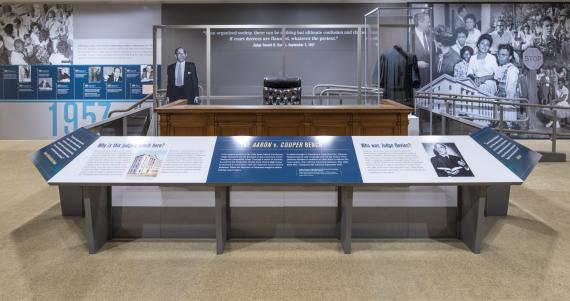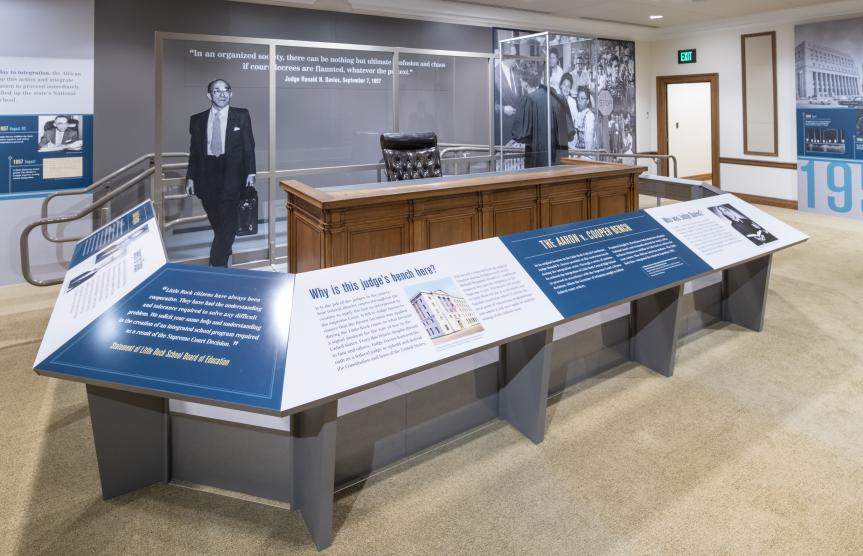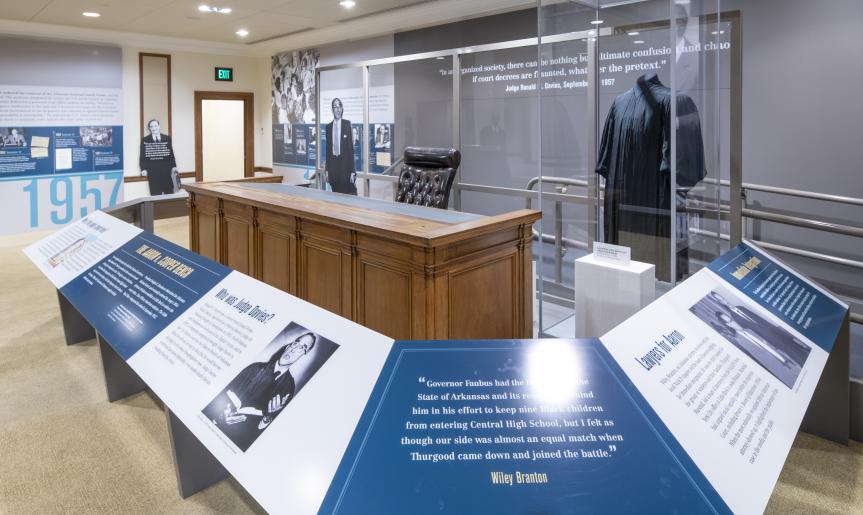Judge's Bench From Historic 1950s Desegregation Case Featured in Supreme Court Exhibition
Each May during Preservation Month we celebrate the people and places that tell our nation’s stories. Now, with the help of the U.S. Supreme Court, GSA’s Greater Southwest Region can continue to share the story of how one city in Arkansas during the 1950s left a lasting impact on American history.

The Supreme Court’s “Integration Must Proceed Forthwith” Exhibition highlights the historic integration of Central High School in Little Rock, Arkansas, in 1957. The exhibit features the bench used by Judge Ronald Davies when the “Little Rock Nine” first sued for the right to attend Central High.
The Judge’s bench, also known as the “Cooper Bench,” was originally in an auxiliary courtroom in Room 436 at the Richard Arnold Courthouse in Little Rock. It was shipped in a custom shipping crate to the Supreme Court in October 2022 and received minor conservation treatment: cleaning and readhering the historic fabric on the desktop and recreating a missing drawer to match the surviving one. The bench, alongside the Judge’s robe, was installed in the exhibit in 2023.
“The Cooper bench is a significant object in the judicial history of the United States,” Matthew Hofstedt, curator of the Supreme Court, said. “When GSA planned to repurpose the Auxiliary Courtroom in the Arnold Courthouse where the bench was located, it opened up an opportunity to use the bench for this special exhibition at the Supreme Court that helps educate visitors about the Aaron v. Cooper case (later Cooper v. Aaron at the Supreme Court) and the compelling story of the Little Rock Nine.”
The exhibit, which walks visitors through the details behind Aaron v. Cooper, provides facts about Judge Davies and the bench, and offers a timeline of the civil rights movement in Little Rock during the 1950s, opened on December 4, 2023. Visitors have been able to relive history as they see the authentic bench and watch a gallery film that tells the story of this significant time in our nation’s history as told by the Justices of the Supreme Court.
The Cooper bench is scheduled to remain on display through the summer of 2026. Hofstedt estimates that as many as 150,000 to 200,000 people will see the exhibition before it closes. “It was a unique opportunity to not only preserve an important historical object, but also educate visitors who come to the nation’s highest court each year,” Hofstedt said.
Once the exhibition closes, the Cooper bench will return to the Richard Arnold Courthouse where the U.S. District Court for the Eastern District of Arkansas, partnering with GSA, will incorporate it into a new era-faithful courtroom and judicial learning center.



 U.S. General Services Administration
U.S. General Services Administration